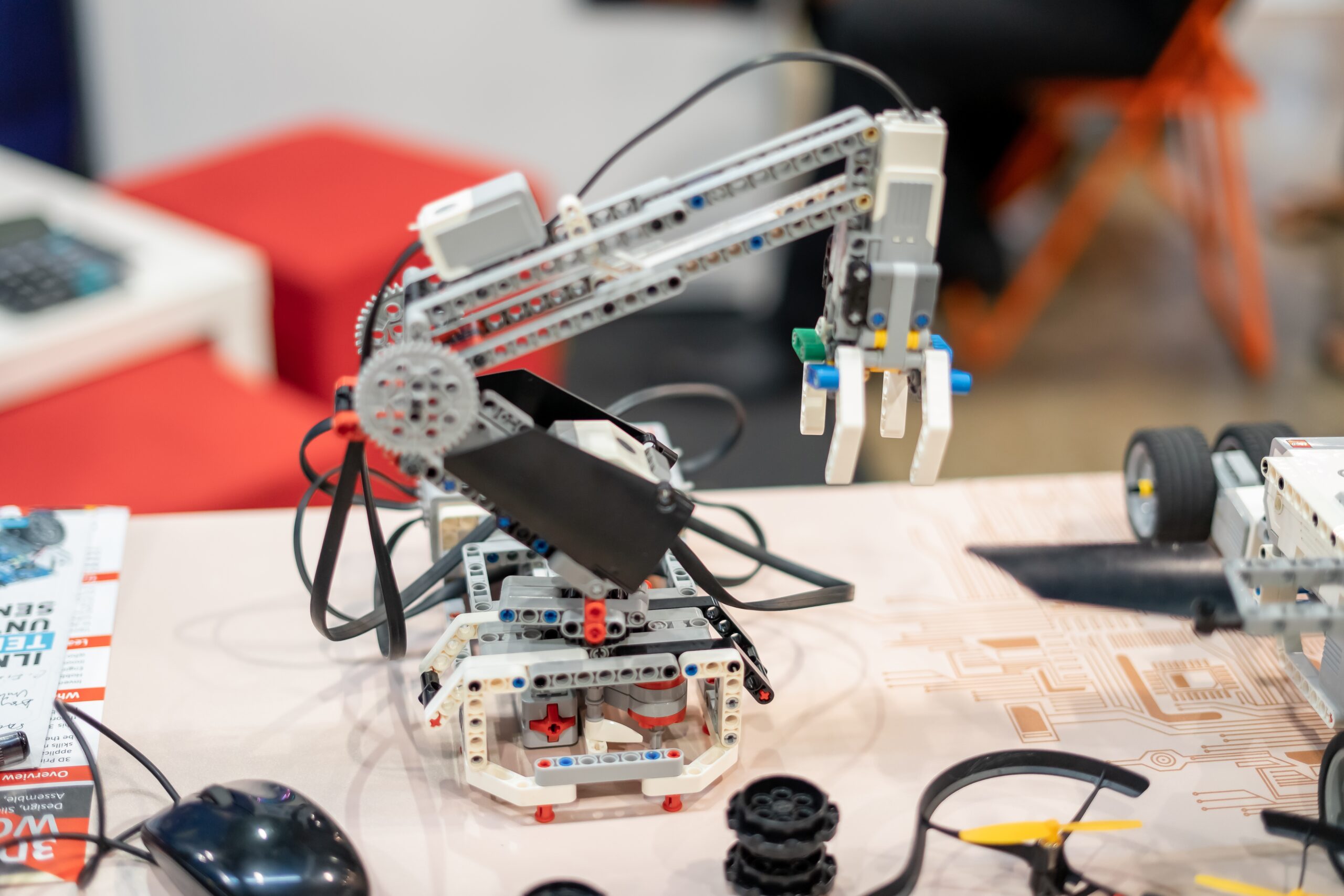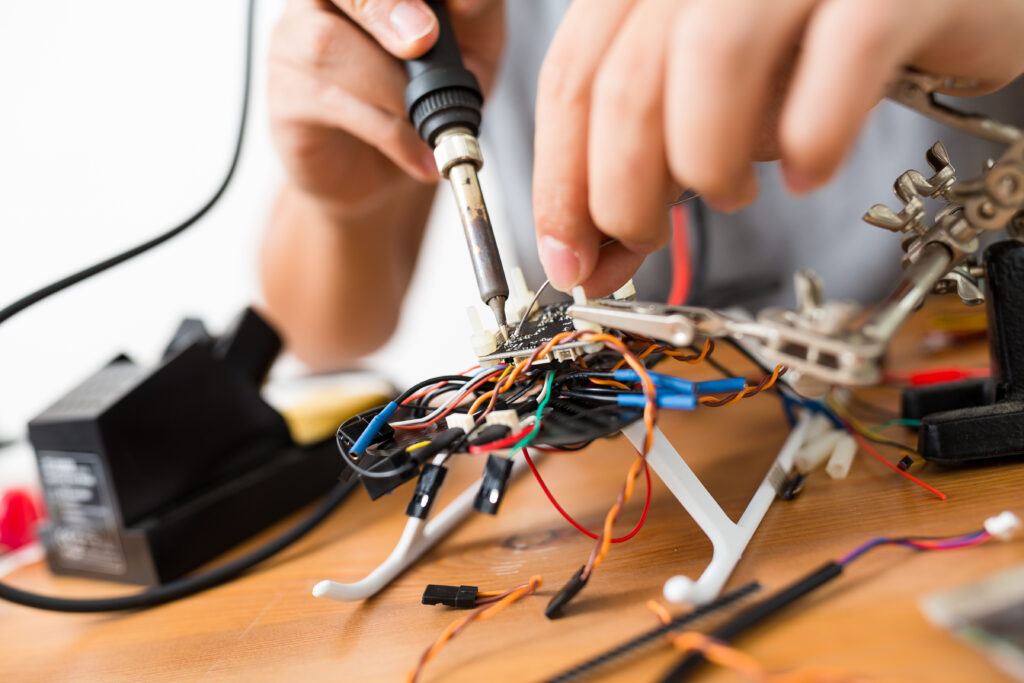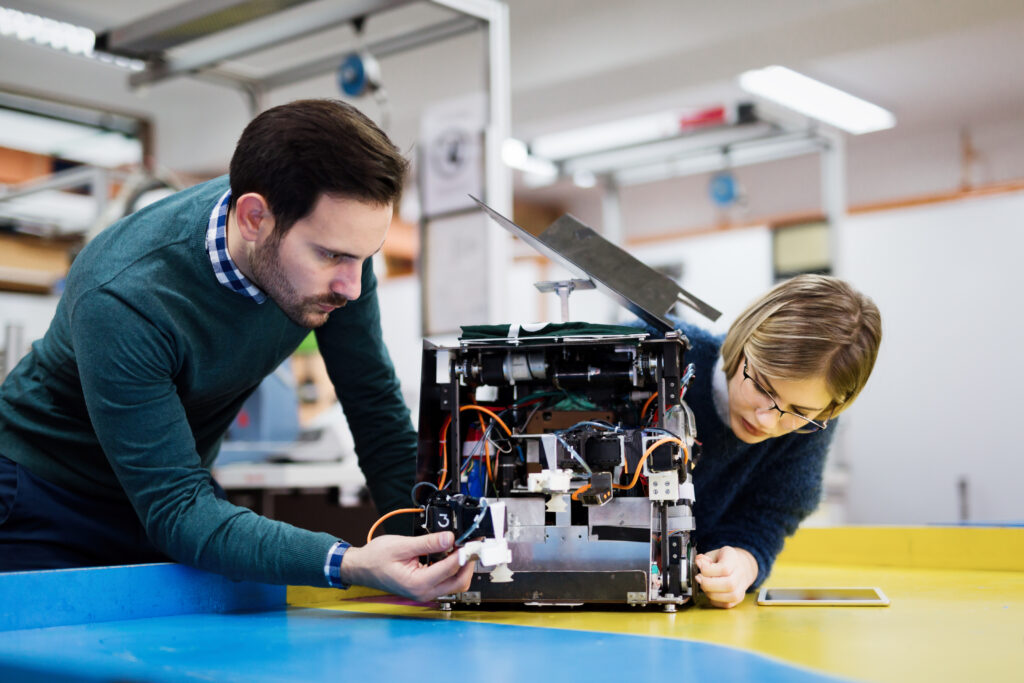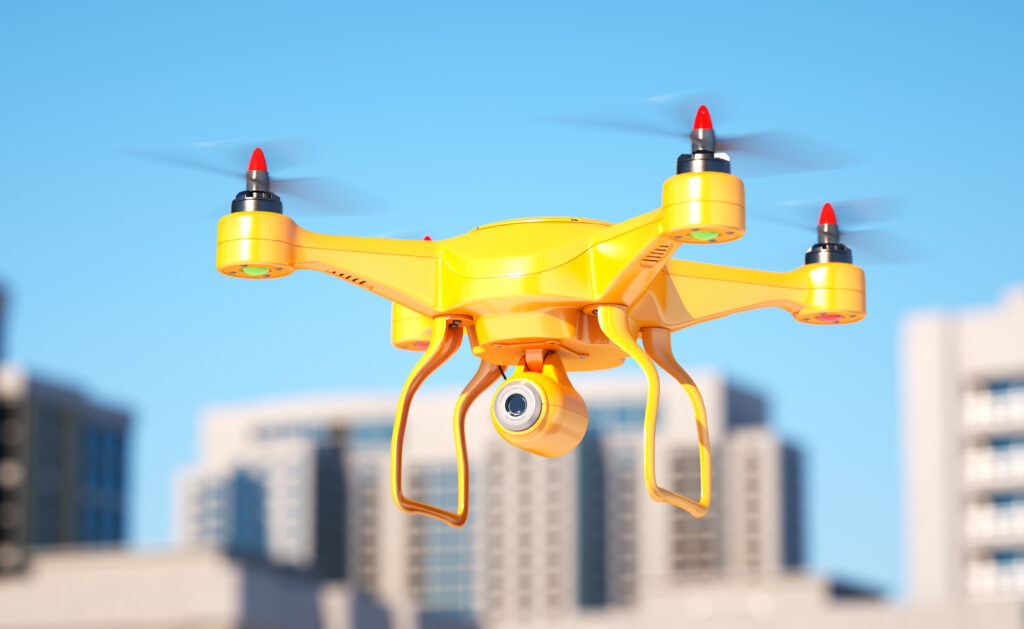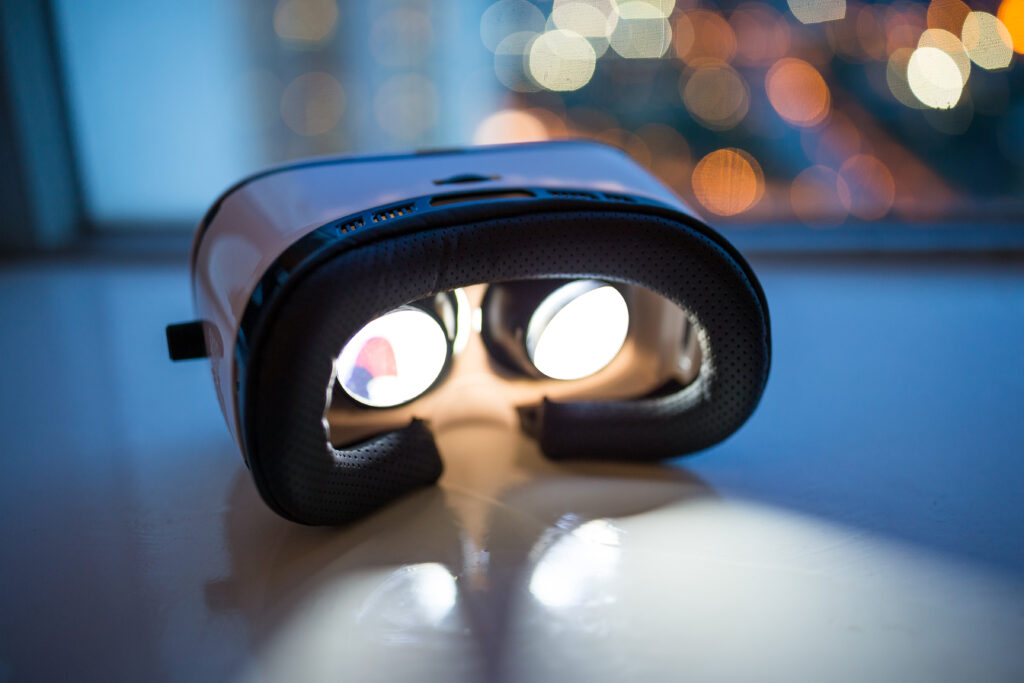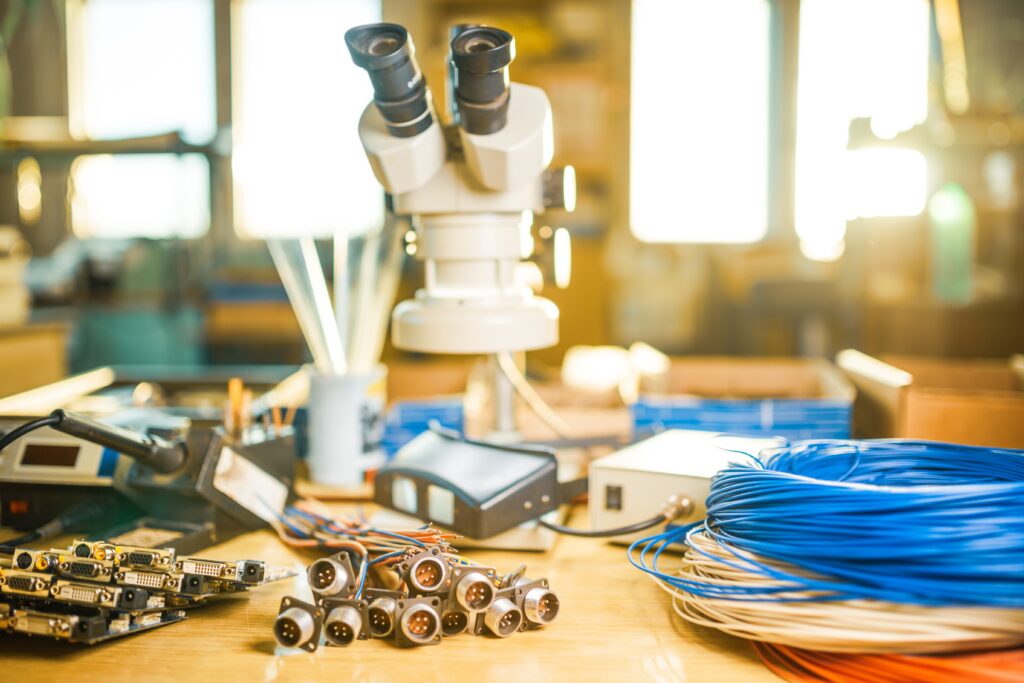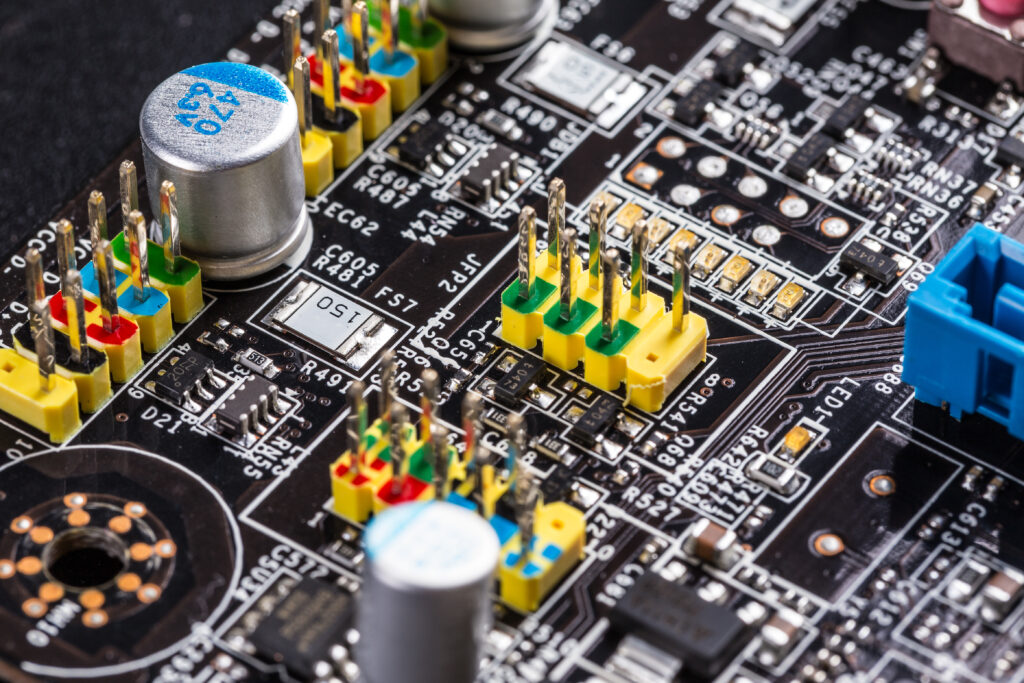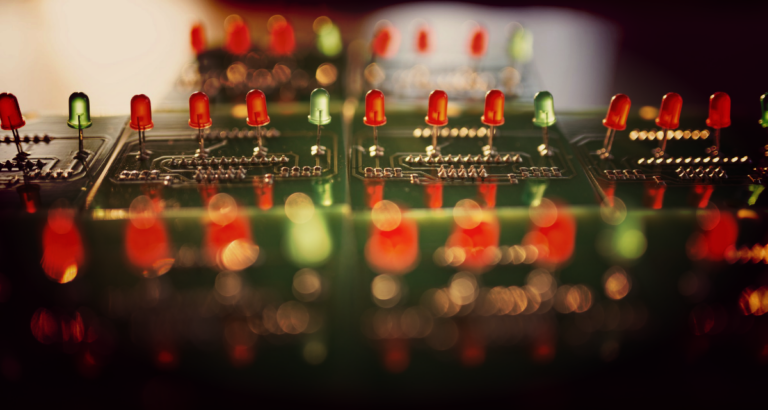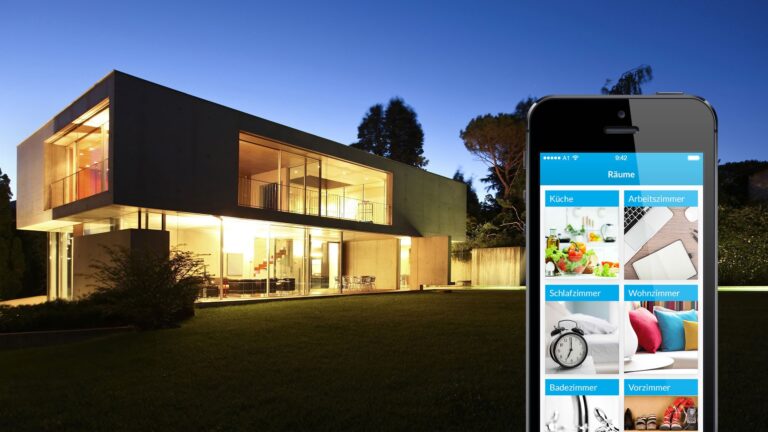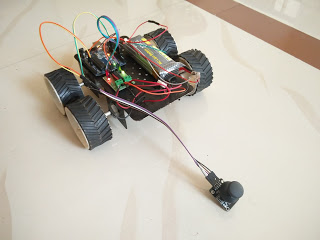Beyond the Basics: Challenging Electronics Project Ideas to Take Your Skills to the Next Level
Electronics is an exciting and rapidly growing field that offers endless possibilities for innovation and creativity. From simple circuits to advanced robotics, there are countless electronics projects that you can undertake to learn new skills, explore new technologies, and bring your ideas to life. Whether you’re a student, a hobbyist, or a professional engineer, working on electronics projects can be a rewarding and challenging experience that allows you to push the boundaries of what’s possible.
In this blog post, we’ll explore some exciting electronics projects that you can tackle, from beginner-level projects that require minimal experience and equipment to advanced projects that will challenge even the most skilled electronics enthusiasts. Whether you’re interested in building your own electronic gadgets, creating your own IoT devices, or exploring the latest developments in electronics and robotics, there’s sure to be a project that will capture your imagination and inspire you to dive deeper into this fascinating field.
The Power of Learning by Doing: Why Electronics Projects Matter
Electronics projects are a great way to learn new skills, explore new technologies, and push the boundaries of what’s possible. Here are some of the key reasons why doing electronics projects is important:
Learning New Skills: Electronics projects provide an excellent opportunity to learn new skills and develop your knowledge of electronics, programming, and engineering. As you work on projects, you’ll gain practical experience in circuit design, prototyping, soldering, and troubleshooting, as well as programming languages, hardware platforms, and software tools.
Creative Expression: Electronics projects allow you to express your creativity and bring your ideas to life. Whether you’re building a robot, creating a musical instrument, or designing a smart home system, electronics projects give you the freedom to experiment with new technologies and develop your own unique ideas and solutions.
Career Development: For those interested in pursuing a career in electronics or engineering, working on projects can be an excellent way to develop your skills and build your portfolio. Employers often look for candidates who have hands-on experience in designing, building, and testing electronic systems, and electronics projects providing a great way to demonstrate your abilities and showcase your work.
Problem-solving Skills: Electronics projects require a lot of problem-solving skills, as you’ll need to identify and troubleshoot issues that arise during the design and build process. By working on electronics projects, you’ll develop your critical thinking, analytical, and troubleshooting skills, which can be valuable in many areas of life.
Personal Satisfaction: Finally, working on electronics projects can be incredibly satisfying and rewarding. Seeing your project come to life and work as intended can give you a great sense of accomplishment and boost your confidence in your abilities.
Overall, electronics projects offer a wide range of benefits, from learning new skills and expressing your creativity to building your career and developing your problem-solving abilities. Whether you’re a beginner or an experienced electronics enthusiast, there’s always a new project to tackle and a new challenge to overcome.
List of Electronics Projects
Electronics projects are creative and innovative projects that involve designing and building electronic systems, circuits, and devices. They can range from simple projects, such as building a circuit that blinks an LED light, to complex projects, such as designing a robot that can navigate a maze. Electronics projects offer a unique opportunity to learn about electronics and technology through hands-on experience, experimentation, and problem-solving. They can also provide a great platform to showcase one’s creativity and innovation, as well as develop important skills such as circuit designing, programming, and prototyping. Electronics projects can be done by anyone with an interest in electronics, including hobbyists, students, educators, and professionals in related fields. These projects can also lead to exciting career opportunities in the electronics industry, as well as contribute to the development of new technologies and innovations.
Quadcopter Drone
Design and build a quadcopter drone from scratch using open-source hardware and software. This project will require knowledge of mechanical engineering, electronics, and programming.
Building a quadcopter drone from scratch is an exciting and challenging electronics project that requires a combination of mechanical engineering, electronics, and programming skills. Here are some reasons why building a quadcopter drone is a great electronics project:
Hands-on Experience: Building a quadcopter drone from scratch provides an excellent opportunity to gain hands-on experience in mechanical engineering, electronics, and programming. You’ll learn how to design and build a lightweight frame, select and integrate various electronic components, and program the drone’s flight control system.
Customization: By building your own drone, you have complete control over the design and functionality of the system. You can customize the drone to suit your specific needs and preferences, from the size and shape of the frame to the type and size of the motors and the configuration of the control system.
Technical Challenge: Building a quadcopter drone is a challenging project that requires a lot of technical expertise and attention to detail. From selecting the right components to tuning the flight control system, there are many technical aspects to consider, which can be both intellectually stimulating and satisfying to solve.
Fun and Engaging: Once you’ve built your drone, you can enjoy flying it and experimenting with its capabilities. Whether you’re using it for aerial photography, racing, or just for fun, flying a quadcopter drone can be an engaging and exciting experience that provides a unique perspective on the world around us.
Practical Applications: Drones have many practical applications, from agriculture and surveying to search and rescue and delivery services. By building your own drone, you can develop the skills and expertise needed to create custom solutions for these and other applications.
Overall, building a quadcopter drone is a challenging and rewarding electronics project that offers a range of benefits, from hands-on experience and customization to technical challenges and practical applications. Whether you’re a hobbyist or a professional engineer, building your own drone is a great way to develop your skills, unleash your creativity, and have fun in the process.
Virtual Reality Headset
Build a virtual reality headset using a combination of off-the-shelf components and custom hardware. This project will require expertise in optics, electronics, and software development.
Building a virtual reality (VR) headset from scratch is an exciting and cutting-edge electronics project that involves a combination of hardware and software development skills. Here are some reasons why building a VR headset is a great electronics project:
Immersive Experience: A VR headset provides a unique and immersive experience that allows you to explore virtual worlds and environments in a way that feels almost like being there in person. By building your own headset, you can customize the hardware and software to create a unique VR experience tailored to your preferences.
Technical Challenge: Building a VR headset requires a lot of technical expertise and attention to detail. You’ll need to select and integrate various electronic components, such as displays, lenses, sensors, and controllers, and program the software to control the headset’s functionality.
Customization: By building your own headset, you have complete control over the design and functionality of the system. You can customize the headset to suit your specific needs and preferences, from the size and shape of the frame to the type and resolution of the displays and the functionality of the controllers.
Practical Applications: VR technology has many practical applications, from gaming and entertainment to education and training. By building your own headset, you can develop the skills and expertise needed to create custom solutions for these and other applications.
Cutting-edge Technology: VR technology is at the forefront of the electronics industry, and building a headset provides an opportunity to learn about the latest advances in displays, sensors, and controllers. By building your own VR headset, you can stay up-to-date with the latest trends and innovations in the field.
Overall, building a VR headset is a challenging and rewarding electronics project that offers a range of benefits, from immersive experiences and customization to technical challenges and practical applications. Whether you’re a hobbyist or a professional engineer, building your own VR headset is a great way to develop your skills, unleash your creativity, and explore cutting-edge electronics and technology.
Smart Mirror
Create a smart mirror that can display information such as news, weather, and calendar updates. This project will require knowledge of programming, electronics, and display technologies.
Building a smart mirror is a fascinating and challenging electronics project that combines software and hardware development skills. A smart mirror is a reflective surface that is augmented with digital displays and sensors, enabling it to display information and provide interactive functionality. Here are some reasons why building a smart mirror is a great electronics project:
Customization: By building your own smart mirror, you have complete control over the design and functionality of the system. You can customize the mirror to suit your specific needs and preferences, from the size and shape of the mirror to the type and placement of the digital displays and sensors.
Practical Applications: A smart mirror has many practical applications, from displaying weather and news updates to controlling smart home devices and monitoring fitness data. By building your own smart mirror, you can develop the skills and expertise needed to create custom solutions for these and other applications.
Technical Challenge: Building a smart mirror requires a lot of technical expertise and attention to detail. You’ll need to select and integrate various electronic components, such as displays, sensors, and microcontrollers, and program the software to control the mirror’s functionality.
Cutting-edge Technology: A smart mirror is a relatively new and innovative technology, and building one provides an opportunity to learn about the latest advances in digital displays and sensors. By building your own smart mirror, you can stay up-to-date with the latest trends and innovations in the field.
Hands-on Experience: Building a smart mirror provides an excellent opportunity to gain hands-on experience in electronics and software development. You’ll learn how to design and build a custom frame, integrate various electronic components, and program the mirror’s software.
Overall, building a smart mirror is a challenging and rewarding electronics project that offers a range of benefits, from customization and practical applications to technical challenges and hands-on experience. Whether you’re a hobbyist or a professional engineer, building your own smart mirror is a great way to develop your skills, unleash your creativity, and explore cutting-edge electronics and technology.
Gesture-Controlled Robot
Building a gesture-controlled robot is an exciting and challenging electronics project that involves the integration of various hardware and software components. This project involves creating a robot that can be controlled using hand gestures, providing a unique and intuitive interface for users. Here are some reasons why building a gesture-controlled robot is a great electronics project:
Unique Control Interface: Controlling a robot using hand gestures provides a unique and intuitive interface that is easy for users to learn and use. It allows for more natural and precise control than a traditional joystick or button-based interface.
Technical Challenge: Building a gesture-controlled robot requires a lot of technical expertise and attention to detail. You’ll need to integrate various electronic components, such as sensors, microcontrollers, and motors, and program the software to recognize and respond to hand gestures.
Customization: By building your own gesture-controlled robot, you have complete control over the design and functionality of the system. You can customize the robot to suit your specific needs and preferences, from the size and shape of the robot to the type and placement of the sensors and motors.
Educational Value: Building a gesture-controlled robot is a great way to learn about electronics, robotics, and programming. It provides an opportunity to gain hands-on experience with a range of technologies and to develop your skills in these areas.
Practical Applications: Gesture-controlled robots have many practical applications, from industrial automation to assistive technology for people with disabilities. By building your own gesture-controlled robot, you can develop the skills and expertise needed to create custom solutions for these and other applications.
Overall, building a gesture-controlled robot is a challenging and rewarding electronics project that offers a range of benefits, from unique control interfaces and customization to technical challenges and practical applications. Whether you’re a hobbyist or a professional engineer, building your own gesture-controlled robot is a great way to develop your skills, unleash your creativity, and explore cutting-edge electronics and technology.
Music Synthesiser
Build a music synthesizer that can produce a wide range of sounds and effects, using a combination of analog and digital circuitry. This project will require knowledge of electronics, signal processing, and music theory.
Building a music synthesizer is an exciting and challenging electronics project that combines hardware and software development skills. A music synthesizer is an electronic instrument that creates a wide range of sounds using various electronic components such as oscillators, filters, and amplifiers. Here are some reasons why building a music synthesizer is a great electronics project:
Creativity: By building your own music synthesizer, you have complete control over the sound you create. You can design and experiment with a wide range of sounds and create unique compositions that showcase your creativity.
Technical Challenge: Building a music synthesizer requires a lot of technical expertise and attention to detail. You’ll need to select and integrate various electronic components, such as oscillators, filters, and amplifiers, and program the software to control the synthesizer’s functionality.
Educational Value: Building a music synthesizer is a great way to learn about electronics, audio engineering, and programming. It provides an opportunity to gain hands-on experience with a range of technologies and to develop your skills in these areas.
Customization: By building your own music synthesizer, you can customize the instrument to suit your specific needs and preferences, from the type and number of oscillators to the type and placement of filters and amplifiers.
Practical Applications: Music synthesizers have many practical applications, from live performances and studio recordings to sound design for film and video games. By building your own music synthesizer, you can develop the skills and expertise needed to create custom solutions for these and other applications.
Overall, building a music synthesizer is a challenging and rewarding electronics project that offers a range of benefits, from creativity and customization to technical challenges and practical applications. Whether you’re a hobbyist or a professional musician, building your own music synthesizer is a great way to develop your skills, unleash your creativity, and explore cutting-edge of electronics and audio engineering. Remember, these projects are advanced and will require a lot of time, effort, and skill to complete. Be sure to do your research and ensure that you have the necessary resources and expertise to undertake these projects safely and effectively.
Empowering Innovators: How PCBWay is Helping Project Makers Succeed
PCBWay is a leading online platform that provides a wide range of services and resources for electronics enthusiasts, hobbyists, and professionals. The company specializes in providing high-quality PCB fabrication, assembly, and design services, along with a range of other resources that can be used to support electronics projects. Here are some of the ways in which PCBWay can play a role in doing electronics projects:
PCB Fabrication: One of the most critical aspects of electronics projects is the fabrication of printed circuit boards (PCBs). PCBWay provides high-quality PCB fabrication services that enable users to create custom PCB designs for their projects. This includes options for different PCB materials, thicknesses, and finishes, as well as custom shapes and sizes.
PCB Assembly: In addition to PCB fabrication, PCBWay also offers PCB assembly services. This involves the process of soldering components onto a PCB, which can be time-consuming and technically challenging. PCBWay’s assembly services offer a cost-effective way to have your PCBs assembled quickly and accurately, using state-of-the-art equipment and experienced technicians.
PCB Design: PCBWay also offers a range of tools and resources for PCB design, including software and tutorials. This can be particularly helpful for those new to electronics projects, as it can help to simplify the design process and reduce the likelihood of errors or mistakes.
Parts Sourcing: Finding the right components for electronics projects can be challenging, especially when working on custom designs. PCBWay offers a range of parts-sourcing services, including a parts library and an online parts-ordering platform. This can help users quickly and easily find the components they need for their projects.
Community Support: PCBWay has a large community of electronics enthusiasts and professionals who share their knowledge, experience, and advice through forums, blogs, and other online resources. This community support can be invaluable for those working on electronics projects, as it provides access to a wealth of expertise and knowledge.
Overall, PCBWay plays a critical role in supporting electronics projects by providing high-quality PCB fabrication, assembly, and design services, as well as a range of other resources and support. Whether you’re a hobbyist or a professional, PCBWay can help to simplify the electronics project process and enable you to create high-quality, custom designs that meet your needs and specifications.
PCBWay – Project Sharing Community
PCBWay has an active and vibrant project-sharing community, which allows electronics enthusiasts and professionals to share their projects, knowledge, and experiences with each other. The community is made up of people from all over the world, who are passionate about electronics and enjoy working on a variety of projects.
The project-sharing community on PCBWay provides a platform for users to share their projects, ask for advice, and connect with other like-minded individuals. Members can upload their project files, including schematics, PCB layouts, and source code, and share them with the community. This allows others to learn from their work and build upon their designs, creating a collaborative and supportive environment.
Members can also comment on and rate each other’s projects, providing feedback and support. This feedback can be invaluable, especially for those who are new to electronics projects, as it can help to identify areas for improvement and offer suggestions for future projects.
In addition to project sharing, the community on PCBWay also provides access to a range of other resources, including tutorials, forums, and blogs. These resources cover a wide range of topics related to electronics, including PCB design, assembly, programming, and more. This allows members to learn from experts in the field and gain a deeper understanding of the technologies and techniques used in electronics projects.
Overall, the project-sharing community on PCBWay is an excellent resource for anyone interested in electronics projects. It provides a platform for users to share their work, collaborate with others, and learn from experts in the field. Whether you’re a hobbyist or a professional, the project-sharing community on PCBWay can help to improve your skills, expand your knowledge, and connect with like-minded individuals from around the world.
Conclusion
In conclusion, advanced electronics projects provide a unique opportunity for enthusiasts and professionals to challenge themselves and explore new frontiers in the field of electronics. From building a Virtual Reality Headset to a Smart Mirror, these projects require a higher level of technical skill, creativity, and innovation. By taking on these projects, individuals can push themselves to learn new concepts, techniques, and technologies, and gain a deeper understanding of the inner workings of electronics.
Moreover, advanced electronics projects offer a chance to innovate and create something unique and groundbreaking. Whether it’s developing a new application for existing technology or creating a brand new device from scratch, these projects provide an opportunity to make a real impact and contribute to the ever-evolving field of electronics.
Platforms such as PCBWay have made it easier than ever to access the resources, materials, and expertise needed for these projects, allowing enthusiasts and professionals to collaborate, share their work, and learn from one another. So, if you’re looking to take your electronics skills to the next level and create something truly innovative and exciting, there’s no better time to start exploring the possibilities of advanced electronics projects. Hard work and determination will get you far.
